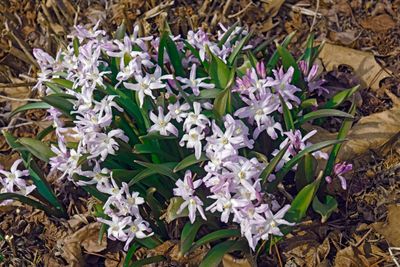Moving Amsonia Plants
In all my years working in garden centers and landscaping, I noticed a curious thing. When moving to a new home, many gardeners will dig up their favorite perennials, herbs or other landscape plants and take them, rather than purchasing or propagating new plants for the new landscape. While herbs or perennials, such as amsonia, are certainly easier to transplant than trees or shrubs, there are still some risks when transplanting any plant. Whether you are transplanting an amsonia plant miles away from its original site or just a few feet away, these risks are the same. Transplanting any plant can put it through stress. In some cases, this transplant shock can kill a plant. There are a couple steps you can take to reduce the stress amsonia may experience during transplant. First, water the plant deeply 24 hours before digging it up. At this point, you can also cut the stems and foliage of amsonia back to about 6 inches (15 cm.) tall. This pruning will help redirect the plant’s energy into the root structure. Also, planning an amsonia transplant day around the weather will help reduce stress. It is always preferred to transplant on cooler cloudy days, when intense heat and sun will not add more stress to the plant.
Transplanting an Amsonia Flower Clump
To transplant an amsonia plant, first use a clean, sharp garden shovel or trowel to carefully cut around the clump’s root zone. Depending on the size of the amsonia clump, you may be digging up a very large root ball. This may be an excellent time to also divide the root ball of older amsonia plants that are overcrowded and struggling. Once the root ball is dug up, you can determine whether to divide it or not based on its general health and the new site or sites it will be transplanted to. To divide an amsonia root ball, simply cut sections of the root ball containing the plant’s crown and stems with a clean, sharp knife or saw. Dividing plants like this may seem brutal but the cuts to the root ball actually stimulate plant growth both above and below the soil level. Transplanting amsonia plants will also go more smoothly if you have the new planting holes or pots already prepared before moving the plant. Amsonia plants should be planted at the same depth they were previously planted, but the holes should be dug twice as wide as the root section which you are planting. This extra width of the planting hole ensures that the roots will have soft loose dirt to spread out in. Place the amsonia transplant in the new planting holes, then back fill with loose soil, only lightly tamping down the soil as you go to prevent air pockets. After transplanting plants, thoroughly water. I also recommend using a product such as Root & Grow to provide a low dose of rooting fertilizer and help reduce transplant shock.
